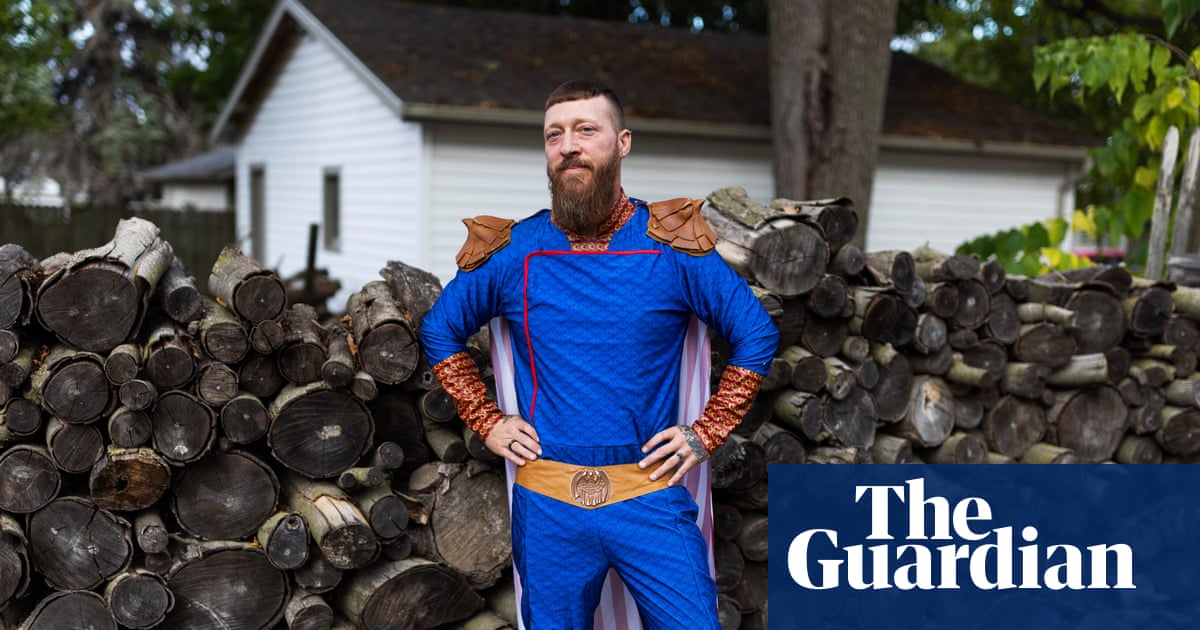Unlock the Editor’s Digest for free
Roula Khalaf, Editor of the FT, selects her favourite stories in this weekly newsletter.
Patti Smith’s 14th book arrives as the singer, poet and artist is midway through a tour to celebrate 50 years since the…

Unlock the Editor’s Digest for free
Roula Khalaf, Editor of the FT, selects her favourite stories in this weekly newsletter.
Patti Smith’s 14th book arrives as the singer, poet and artist is midway through a tour to celebrate 50 years since the…

The Federal Reserve is set to begin expanding its balance sheet again early next year, helping to ease investors’ fears over the daunting borrowing needs of the world’s most important economy.
Fed officials called time on their three-year quantitative tightening programme on Wednesday, with chair Jay Powell acknowledging that the central bank was soon likely to return to becoming a substantial buyer of US Treasuries.
“At a certain point, you’ll want . . . reserves to start gradually growing to keep up with the size of the banking system and the size of the economy,” Powell said.
Fed-watchers think that point could come as soon as the turn of the year.
“We think that the Fed will start buying enough Treasuries to grow the balance sheet again in the first quarter of next year — most likely January and at the latest in March,” said Marco Casiraghi, of Evercore ISI.
Casiraghi added that he expected net purchases of $35bn of Treasuries a month — expanding the Fed’s $6.6tn balance sheet by about $20bn a month, as the Fed will continue to roll off its stock of mortgage-backed securities.
Those purchases will help assure investors who have become worried about the US’s ability to finance its debt payments. More buyers for the bonds should push down yields, making the debt cheaper.
Market anxiety has eased amid expectations the Fed will call time on QT and fund managers respond to signs that budget deficits — averaging about 6 per cent of GDP despite full employment — may improve.
Markets are now “less worried about supply”, said Mark Cabana, head of US rates strategy at Bank of America. “Concerns about the deficit worsening have been cooled due to strong tariff revenues, and the expectation that the Fed will soon start buying [government debt].”
A big rally in 10-year US Treasury bonds since the summer has pushed down their yield, the benchmark for global borrowing costs, from a peak of 4.8 per cent in January to less than 4.1 per cent.
A key driver of the rally has been growing expectations of Federal Reserve interest rate cuts, but the gap between the yields on government bonds and interest rate swaps — an indicator of investor concerns over debt issuance — has also shrunk.
The additional yield on 10-year Treasuries above that of interest rate swaps of the same maturity has roughly halved from its April peak, to about 0.16 percentage points.
“It does seem like the worst fears have been proven wrong, and that the concerns around forever-rising [sovereign debt] supply could be somewhat overblown,” said Ed Acton, a rates strategist at Citi.
Bond yields and swap rates typically trade closely together, as both reflect longer-term interest rate expectations.
But in countries such as the UK and US, yields have climbed well above swap rates this year, as investors demanded extra compensation for buying record quantities of sovereign debt.
An easing of tension over borrowing has also shown up in the so-called flattening of yield curves on government bonds, as the amount being demanded by investors to lend over a longer timeframe has fallen.
Thirty-year Treasury bonds now offer just 1 percentage point in extra yield relative to 2-year bonds, down from above 1.3 percentage points in September.
Moves by policymakers in the US, UK and Japan to shorten the maturity of government issuance have also helped to soothe concerns over a glut of long-term government debt.
In the UK, the gap between 10-year gilt yields and swap rates has fallen from a peak of almost 0.4 percentage points in April to around 0.25 points, aided by a strong rally in gilts in recent weeks.

The Fed took the decision to halt so-called quantitative tightening amid signs that its efforts to drain liquidity from the financial system were causing strains in short-term funding markets.
Analysts say the Fed’s return to bond-buying reflects a desire by US lenders to hold more reserves, and would not represent a return to quantitative easing — the policy deployed by the Fed and other central banks to ease financial and economic tensions by buying trillions of dollars’ worth of government debt.
QE is a much more aggressive form of injecting liquidity into the financial system, aimed at countering periods of acute stress.
“The idea would be to have enough reserves in the system to allow for the smooth implementation of monetary policy — it matches what Fed officials have referred to as an ample reserves framework, which is different from QE,” said Casiraghi.
Under the ample reserves regime, the Fed’s balance sheet would expand at about the same rate as nominal GDP — the sum of an economy’s growth and inflation rates.
Casiraghi added: “In QE, the ratio of reserves to nominal GDP jumps.”
The end to QT has helped to reignite a popular hedge fund bet on Treasury yields converging with swap rates, according to market participants.
Investors poured into the so-called swap spread trade early this year, wagering that a regulatory overhaul would boost demand for Treasuries by making it less expensive for banks to hold them.
But the trade blew up as Treasury yields rose following Trump’s “liberation day” announcement — forcing a painful unwind of the trade that fuelled broader market volatility.
The prospect of the Fed ending QT had “directed more flows” into the trade in recent weeks, said Gennadiy Goldberg, head of US rates strategy at TD Securities.
But with the US government debt burden relative to GDP on track to overtake Italy’s later on this decade, and ongoing debt worries in big economies including the UK and France, investors said the positive moves could be just a temporary easing of concerns about debt sustainability.
“The bigger picture is that US fiscal deficits are set to remain ugly as hell for the foreseeable future,” said Mike Riddell, a fund manager at Fidelity International. “Maybe not quite as bad as feared a few months ago, but still unsustainably large.”

Unlock the Editor’s Digest for free
Roula Khalaf, Editor of the FT, selects her favourite stories in this weekly newsletter.
Phantasmagoria is a familiar vibe for London singer-songwriter Florence Welch, the central force in alt-pop-rock outfit…

Bernard Herrmann – The Murder (1960)
Scary music actually excites me, but the piece that most sends shivers down my spine is the music in the shower scene in Alfred Hitchcock’s film, Psycho. I’ve seen it numerous times and…

As astronomers amass unprecedented volumes of data, the complexities of cosmic study continue to multiply. A groundbreaking innovation is now altering this landscape. Researchers have devised a methodology to…

A vast $1bn museum billed as the world’s largest archaeological facility dedicated to a single civilisation will open outside Cairo on Saturday, after countless delays over the course of its two-decade construction.
The Grand Egyptian Museum,…

On Halloween night in 2020, I came home from work in a terrible mood. I’d had a bad day, and was thinking, “F-everybody.” My wife’s sister was hosting a party that night and I had two costume options – Jesus, or Homelander, the…

Earlier this month, the Poco F8 Ultra got certified for sale in Thailand by NBTC, and today the same has happened to the Poco F8 Pro. This is rather interesting because the F7 Pro and F7 Ultra only launched in March, and we’re barely seven…

Patients with cirrhosis and ascites who develop spontaneous bacterial peritonitis (SBP) are routinely given prophylactic antibiotics to prevent recurrence. Now, a large new retrospective study by Cleveland Clinic researchers suggests that…

When a previously healthy woman developed a bowel obstruction in her hometown of Fort Wayne, Indiana, no one anticipated it would lead to a life-threatening airway injury. After over a month intubated and delayed tracheostomy, the patient arrived…